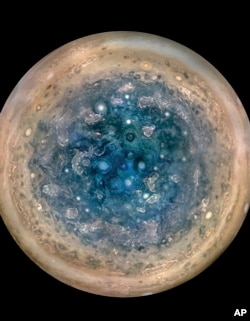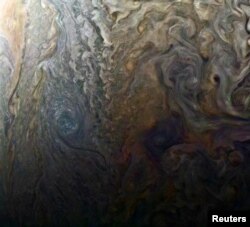Scientists looking at the first pictures of the planet Jupiter sent by the NASA probe Juno were shocked at what they saw: monster cyclones, hundreds of kilometers wide, tearing across the planet's north and south poles.
The scientists said the poles are nothing like the planet's familiar placid and colorful equatorial region.
"That's the Jupiter we've all known and grown to love," Scott Bolton of the Southwest Research Institute, an applied research and development organization in San Antonio, Texas, said in an article released Thursday in the journal Science. "And when you look from the pole, it looks totally different. ... I don't think anybody would have guessed this is Jupiter."
Bolton called the findings "Earth-shattering. Or, should I say, Jupiter-shattering."
Along with the fierce storms, the researchers saw a huge river of ammonia gas extending from Jupiter's deep atmosphere down to its interior. They said they thought the ammonia might be part of what's causing the huge storms.
NASA launched Juno in 2011, and it reached Jupiter's orbit last year. The scientists said Juno's next fly-by would come in July, when it will take pictures of the planet's trademark Great Red Spot — a huge, hurricane-like storm that experts say has been raging for hundreds of years.









